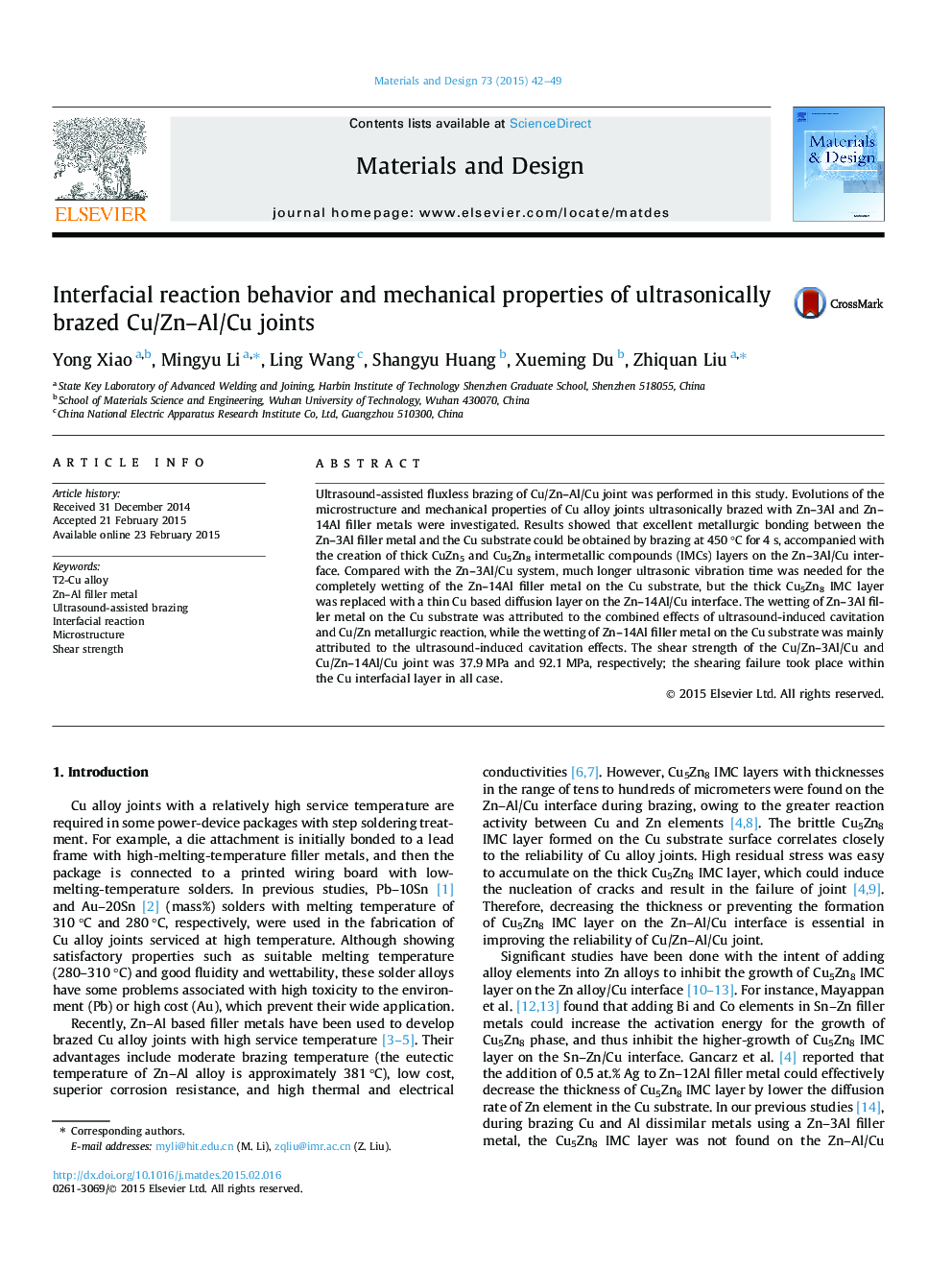| Article ID | Journal | Published Year | Pages | File Type |
|---|---|---|---|---|
| 828649 | Materials & Design (1980-2015) | 2015 | 8 Pages |
•Fluxless brazed Cu/Zn–Al/Cu joints were obtained with the assistance of ultrasound.•A thick Cu5Zn8 IMC layer was found on the Zn–3Al/Cu interface.•A thin Cu based diffusion layer was found on the Zn–14Al/Cu interface.•Mechanisms for interfacial reactions responsible for the bonding are proposed.
Ultrasound-assisted fluxless brazing of Cu/Zn–Al/Cu joint was performed in this study. Evolutions of the microstructure and mechanical properties of Cu alloy joints ultrasonically brazed with Zn–3Al and Zn–14Al filler metals were investigated. Results showed that excellent metallurgic bonding between the Zn–3Al filler metal and the Cu substrate could be obtained by brazing at 450 °C for 4 s, accompanied with the creation of thick CuZn5 and Cu5Zn8 intermetallic compounds (IMCs) layers on the Zn–3Al/Cu interface. Compared with the Zn–3Al/Cu system, much longer ultrasonic vibration time was needed for the completely wetting of the Zn–14Al filler metal on the Cu substrate, but the thick Cu5Zn8 IMC layer was replaced with a thin Cu based diffusion layer on the Zn–14Al/Cu interface. The wetting of Zn–3Al filler metal on the Cu substrate was attributed to the combined effects of ultrasound-induced cavitation and Cu/Zn metallurgic reaction, while the wetting of Zn–14Al filler metal on the Cu substrate was mainly attributed to the ultrasound-induced cavitation effects. The shear strength of the Cu/Zn–3Al/Cu and Cu/Zn–14Al/Cu joint was 37.9 MPa and 92.1 MPa, respectively; the shearing failure took place within the Cu interfacial layer in all case.
Graphical abstractFigure optionsDownload full-size imageDownload as PowerPoint slide
